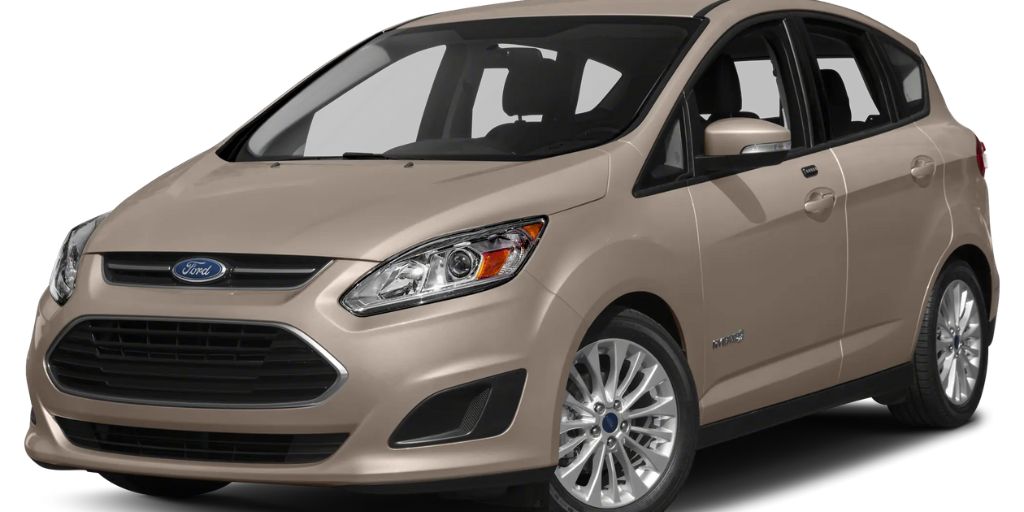Fleet vehicles are the unsung heroes of the transportation world. From rental cars and delivery vans to government cruisers and utility trucks, these machines face extreme daily usage, brutal maintenance cycles, and constant driver turnover.
What makes or breaks a fleet vehicle isn’t style or performance—it’s reliability, durability, and cost-efficiency over hundreds of thousands of miles.
Yet, not all fleet cars are created equal. Some become legends for their resilience, while others are retired early due to chronic issues that make them a poor investment.
In this two-part comparison, we’ll explore five fleet vehicles that have proven to be workhorses, often still going strong after years of heavy service. These models have earned the trust of fleet managers and mechanics alike.
Then, we’ll shift gears and look at five fleet vehicles that couldn’t go the distance—cars and trucks that were pulled from duty long before their expected lifespans due to reliability problems, costly repairs, or poor real-world performance.
Whether you’re managing a fleet or just buying a used ex-fleet vehicle, understanding which models survive the grind—and which fold under pressure—can save you serious money and hassle. Let’s start by celebrating the long-haulers still on the road.
Also Read: 5 Hybrids Worth Every Penny and 5 That Lose Value Instantly
5 Fleet Vehicles Still Running
When it comes to fleet vehicles, longevity is everything. A car or truck that can survive daily abuse, minimal maintenance, and a revolving door of drivers without missing a beat becomes a crown jewel in any fleet.
For governments, rental companies, and corporate operators alike, a long-lasting fleet vehicle isn’t just about dependability—it’s about maximizing ROI. Fewer repairs, fewer replacements, and more uptime equal better margins and lower total cost of ownership.
The fleet vehicles featured here didn’t just hold up—they thrived under pressure. These are the models that routinely cross the 200,000-mile mark, often still on their original drivetrain.
They’re found delivering packages, shuttling passengers, or patrolling streets with surprising endurance. Whether due to solid engineering, low operating costs, or just plain resilience, these vehicles became the backbone of many commercial operations.
We’re highlighting them not just for their durability but also to guide potential buyers who might encounter one of these machines on the used market.
Ex-fleet cars can be high-mileage, but if they’re one of these five, there’s a good chance they’ve got more life left than most people expect. And if you’re managing a fleet, these are the dependable workhorses that justify every penny.
Let’s get into the list of five fleet vehicles that are still out there, still running, and still proving their worth every single day.
1. Ford Crown Victoria Police Interceptor (1998–2011)
If there were a hall of fame for fleet durability, the Ford Crown Victoria Police Interceptor (CVPI) would be a first-ballot inductee.
Built like a tank and engineered with simplicity in mind, the CVPI has long been the gold standard for police departments, taxi companies, and even government fleets across North America.
Despite ending production in 2011, thousands of these V8-powered sedans are still patrolling small-town streets, serving as municipal vehicles, or doing private security rounds today.
At the heart of the Crown Vic’s durability is the legendary 4.6-liter Modular V8 engine. While not the most powerful, it is nearly indestructible when maintained even moderately.
Paired with a four-speed automatic transmission and solid rear axle, the setup is mechanically simple and easy to service. Parts are widely available, and many mechanics are intimately familiar with every bolt and bracket of the car.
Another reason for its longevity is the body-on-frame construction, rare for sedans. This design makes the vehicle tougher in accidents and easier to repair after a collision—both huge benefits for high-risk fleet use. Many Crown Vics were rear-ended multiple times and kept going with just a new bumper bolted on.
The Police Interceptor variant added even more durability with heavy-duty cooling systems, upgraded suspension, and better brakes.
Some units even came with engine oil coolers and dual exhausts. It’s not unusual to find CVPIs still operating reliably with 300,000+ miles—often with their original powertrain.

Fuel economy was never its strength, averaging 15–18 mpg, but its reliability and ease of service more than made up for that shortfall.
Many departments have struggled to replace the Crown Vic with modern alternatives that are as tough or as affordable to maintain.
Today, used Crown Victorias are prized by rural police forces, security firms, and budget-conscious enthusiasts. The car’s cult following and proven track record in extreme conditions ensure that it remains one of the most respected and enduring fleet vehicles ever built.
Coming up next: another fleet icon with incredible longevity—the Toyota Prius.
2. Toyota Prius (2004–2015, Second and Third Generations)
When hybrid technology first entered the mainstream, many fleet managers were skeptical. But the Toyota Prius didn’t just prove itself—it became a game-changer.
While it started as a novelty in the early 2000s, the second and third-generation Prius quickly built a reputation for two things: astonishing fuel economy and bulletproof reliability.
Today, you’ll still see 10- to 15-year-old Priuses operating as city cabs, rideshare vehicles, and even government cars, racking up mileage most gasoline cars can only dream of.
What makes the Prius so ideal for fleet use is the hybrid synergy drive system. The combination of a 1.5L or 1.8L gasoline engine with an electric motor is not only efficient but incredibly durable.
Many units on the road have crossed 300,000 miles without requiring major drivetrain repairs. The electric motors are sealed and rarely fail, and the hybrid batteries—once feared for their replacement cost—routinely last 200,000 miles or more. Toyota even made them relatively affordable to replace when necessary.
For taxi companies, especially in big cities, the Prius changed the economics of operation. With real-world fuel economy often over 45 mpg, operators could dramatically cut their fuel bills. And thanks to regenerative braking and fewer moving parts, wear and tear was significantly reduced.
The interior, while basic, was spacious enough to be functional, with a flat floor and hatchback practicality. This made the car surprisingly adaptable, whether used for passenger transport or courier services.
Maintenance costs are low, and Toyota’s widespread dealer network ensures support is never far away. Even mechanics unfamiliar with hybrids often find the Prius straightforward to service due to Toyota’s thoughtful engineering and extensive documentation.
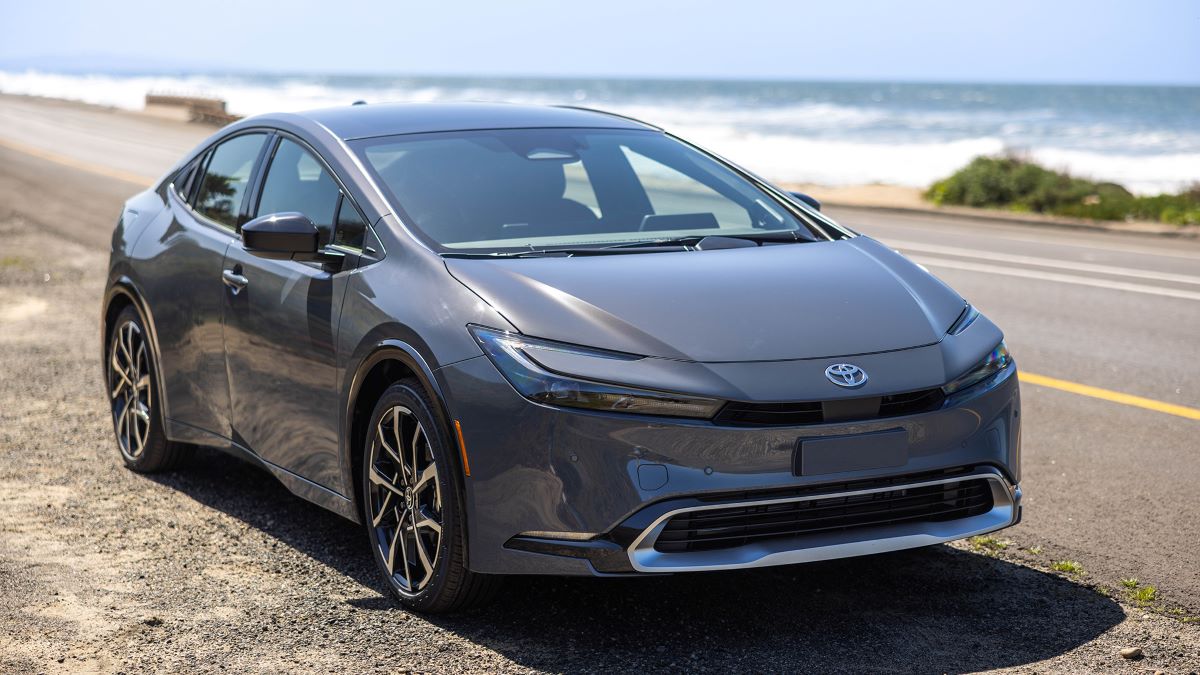
Despite their high mileage, older Priuses often pass emissions tests and keep their value in secondary markets. That’s a testament to how well these vehicles were built.
In an era when green credentials and operating cost matter more than ever, the second and third-gen Prius continues to hold a strong place in the fleet world.
For any organization looking for long-term savings and minimal headaches, few vehicles match the Prius for total lifecycle value.
Next up: the delivery van that dominates logistics fleets—the Mercedes-Benz Sprinter.
3. Mercedes-Benz Sprinter (2007–Present)
In the commercial van world, the Mercedes-Benz Sprinter is a giant—literally and figuratively.
Originally introduced to North America under the Dodge and Freightliner badges, the Sprinter became the go-to van for delivery fleets, utility companies, shuttle services, and ambulance conversions. Its appeal?
Outstanding cargo capacity, modular body options, and most importantly, long-term durability when maintained properly. While some may balk at its premium badge, the Sprinter has earned a reputation as a true workhorse in the fleet world.
The Sprinter’s diesel engine offerings, particularly the 3.0L V6 BlueTEC and the 2.1L 4-cylinder diesel, are known for their stamina.
Properly maintained, these powerplants regularly exceed 300,000–400,000 miles, with many Amazon and FedEx contractors still running first-decade models on their daily routes.
The transmissions—whether 5-speed or 7-speed automatics—are also built for long-haul use, designed to handle heavy loads and frequent stops without early failure.
What truly sets the Sprinter apart is its versatility. Fleet buyers can choose from multiple roof heights, wheelbases, and configurations—cargo, crew, passenger, or chassis cab. This makes it an ideal platform for businesses ranging from mobile workshops to airport shuttles.
One of the biggest advantages for fleet operators is the exceptional fuel economy for its size. The diesel variants routinely outperform domestic gasoline vans in both MPG and torque delivery. Combined with the vehicle’s aerodynamic design, operators enjoy significant savings over time.
However, the Sprinter does come with caveats. Maintenance costs are higher than domestic rivals, and neglecting routine service can lead to expensive repairs—especially for emissions systems and turbo components.
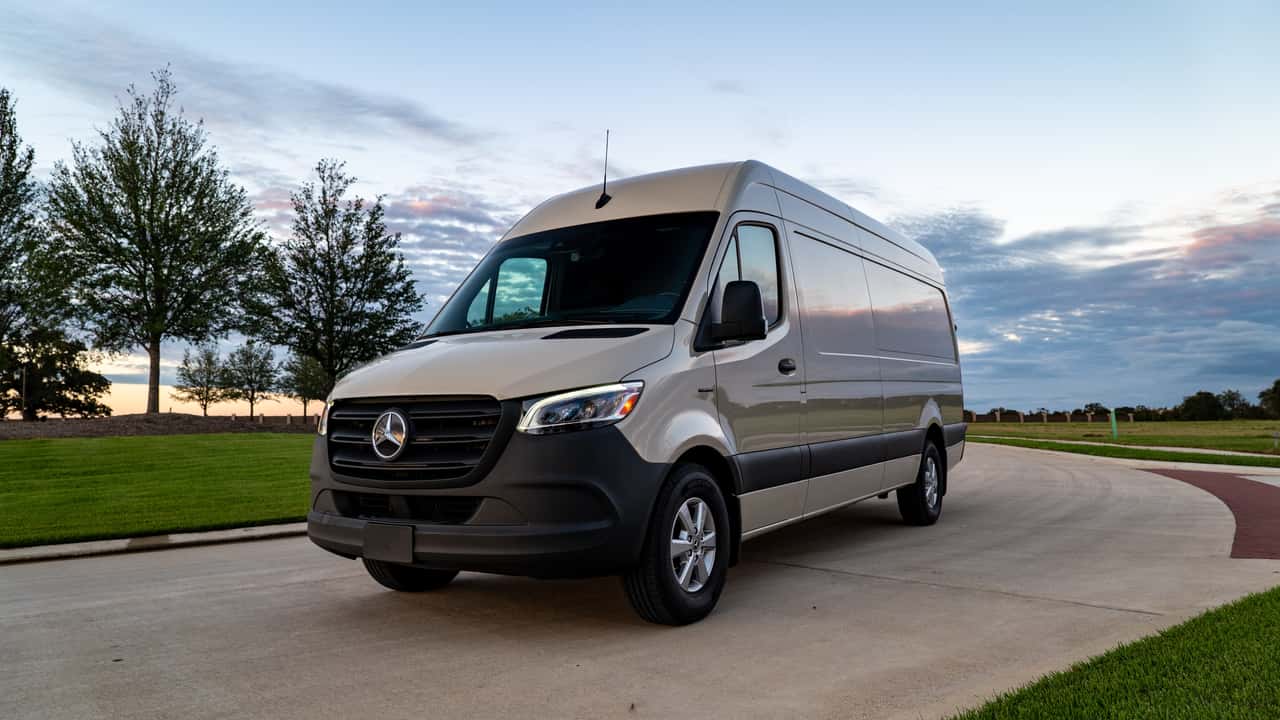
That said, fleet managers who follow Mercedes’ service intervals and use qualified technicians often report far fewer issues.
The Sprinter has proven itself over the years in harsh climates and demanding use cases. Whether traversing urban centers or rural highways, it keeps delivering—literally.
Its reputation for going the distance makes it one of the most enduring vehicles in modern fleet use.
Next up: a midsize sedan that became a fleet favorite for good reason—the Chevrolet Malibu.
4. Chevrolet Malibu (2008–2016, Eighth Generation)
While it’s easy to overlook sedans in today’s SUV-heavy market, the eighth-generation Chevrolet Malibu quietly carved out a legacy as one of the most dependable and cost-effective sedans used in rental and municipal fleets.
Produced between 2008 and 2016, this generation of the Malibu struck a balance of comfort, reliability, and low operating costs, making it a staple for rental companies, government agencies, and even pharmaceutical reps who needed to cover thousands of highway miles per month.
What helped the Malibu succeed in fleets was simplicity. Most came equipped with the 2.4L Ecotec inline-4, a powertrain known more for longevity than performance.
While not a speedster, the engine was fuel-efficient, smooth, and extremely reliable when maintained with basic oil and coolant changes.
The 6-speed automatic transmission that accompanied it had early teething issues in some models, but revisions in later years made it a reasonably durable partner.
The Malibu’s comfortable ride, ample interior space, and quiet cabin made it ideal for long hours on the road. Fleet drivers praised its stability at highway speeds and relatively soft suspension, which soaked up rough pavement without complaint.
It also offered good crash-test scores and decent safety features, making it a solid pick for public service fleets.
For rental companies, the Malibu was a dream. It required few repairs, held its value better than some domestic peers, and was inexpensive to buy in volume.
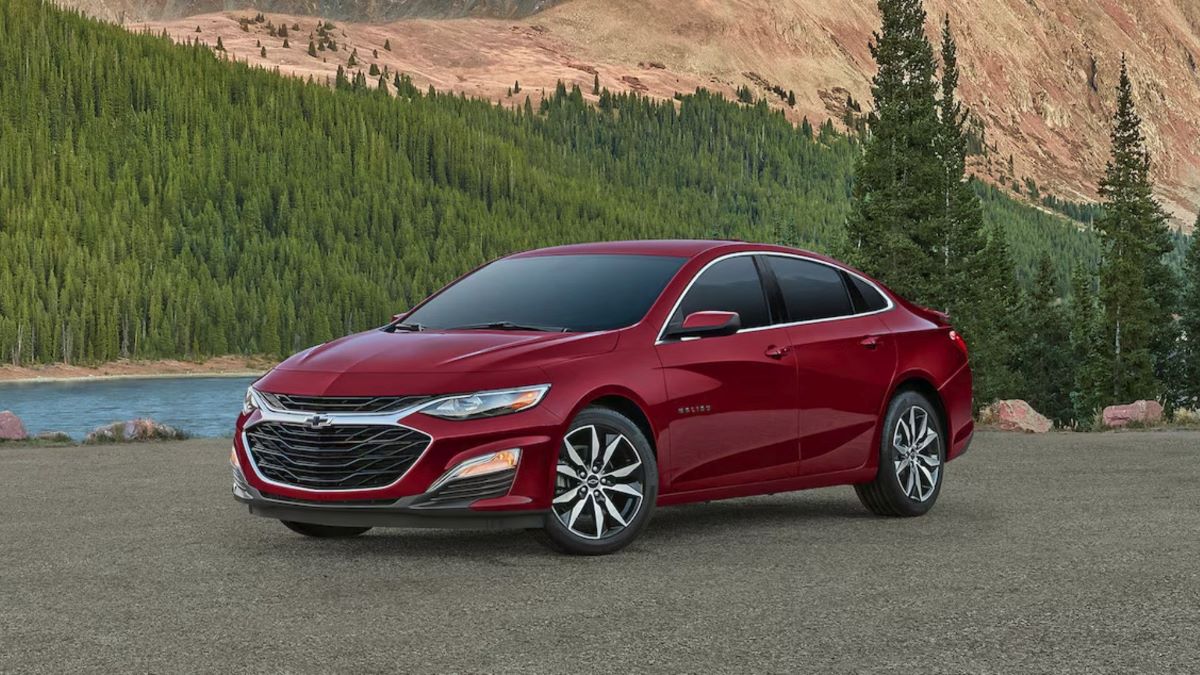
Parts were widely available, and even after de-fleeting, used models sold quickly on the secondary market. Many units ended up in private hands where they continued racking up mileage, often crossing 200,000 miles with only routine maintenance.
Perhaps most telling is that many municipalities continue to use these cars long after their replacements have been ordered. Whether as city inspector vehicles, fleet sedans for engineers, or light-duty service cars, the Malibu keeps going—and going.
Its mechanical simplicity, solid ride quality, and affordability have earned it a lasting place in fleet circles. It may not be flashy, but the Malibu is a survivor.
Next up: a vehicle synonymous with delivery—none other than the Ford Transit.
5. Ford Transit (2015–Present)
The Ford Transit has become the backbone of countless fleets since it replaced the long-running Econoline in 2015. Whether it’s moving cargo for a plumbing company, ferrying airport passengers, or serving as a last-mile delivery vehicle, the Transit is everywhere.
That’s no accident. It offers massive flexibility, smart design, and—crucially—long-term durability that keeps it in service well beyond 200,000 miles. For many fleets, it’s not just another van—it’s a dependable work partner.
One of the Transit’s biggest strengths is modularity. Available in low, medium, and high roof options, with multiple wheelbase and length configurations, the Transit can be tailored to almost any fleet purpose. That flexibility has made it a favorite for companies like FedEx, U-Haul, Amazon contractors, and service providers nationwide.
Under the hood, the Transit has several engine options, but fleet managers particularly favor the 3.5L EcoBoost V6 and the 3.7L V6 for their balance of power and reliability.
The EcoBoost, in particular, provides strong torque for heavy payloads while maintaining decent fuel efficiency for a full-size van. Even better, both engines have shown solid reliability records, with many units crossing 250,000 miles on their original drivetrain.
Unlike some European-style vans, the Transit is easy to service in North America. Parts are widely available, and Ford’s expansive dealership network ensures quick turnarounds for maintenance.
Fleet buyers also benefit from Ford’s commercial vehicle support program, which includes upfitting solutions and telematics options to track vehicle health and driver habits.
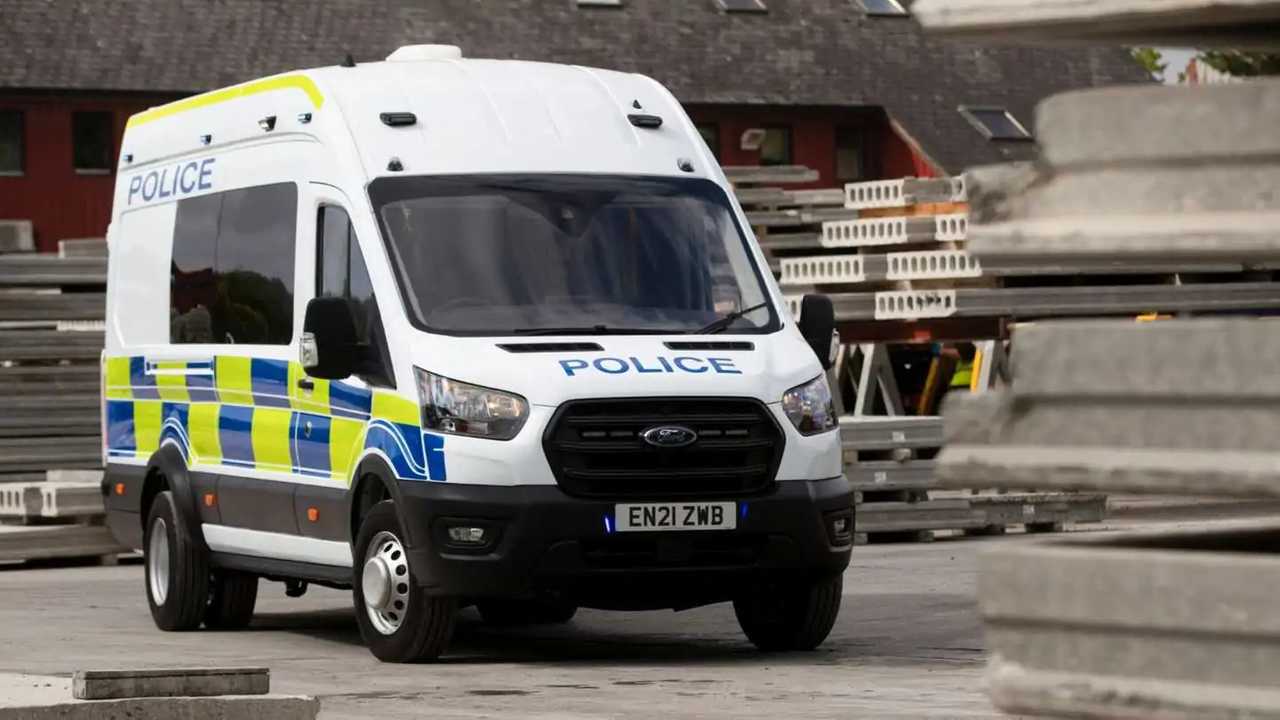
Inside, the Transit offers a surprisingly refined driving experience for such a large vehicle. The cabin is ergonomic, visibility is excellent, and the driving dynamics are more like a large SUV than a lumbering box truck. This makes driver training easier and reduces fatigue on long shifts.
Perhaps the best proof of its longevity is that so many used Transit vans continue life as mobile businesses, camper conversions, and contractor rigs. Their lasting presence on the road—often with six figures on the odometer—is proof of how well-built they are.
The Ford Transit may be utilitarian, but its ability to stay on the road and take punishment without complaint makes it a fleet champion.
5 Fleet Vehicles That Were Retired Early
Fleet managers live and die by total cost of ownership, and when a vehicle consistently breaks down, demands expensive repairs, or just can’t keep up with the job, it gets the axe—fast.
Unlike private owners who might tolerate quirks or stretch the life of a failing car, fleets operate with hard numbers. If a model doesn’t deliver consistent uptime and value, it won’t survive long in rotation.
This section looks at five vehicles that failed to live up to fleet expectations. These aren’t necessarily bad cars in every context, but for heavy-duty, high-mileage, commercial, or municipal use, they underperformed.
Whether due to mechanical issues, design flaws, or just poor return on investment, these models found themselves retired early from fleet duty—often well before their competitors were done.
Some were plagued by chronic transmission or engine problems. Others offered poor fuel economy that couldn’t be justified in high-usage roles.
A few were simply too complex or expensive to maintain under the cost-sensitive world of fleet logistics. And even vehicles from otherwise reliable brands have occasionally turned out to be poor fits for fleet environments.
If you’re considering a used ex-fleet vehicle or are involved in vehicle acquisition for a business, these are models you might want to approach with caution. The early retirements weren’t isolated cases—they were patterns, recognized across industries.
Let’s begin the countdown with one of the most notorious fleet underperformers of the past decade: the Dodge Journey.
1. Dodge Journey (2009–2020)
On paper, the Dodge Journey looked like an ideal fleet vehicle. It was a budget-friendly midsize crossover with available three-row seating, decent cargo space, and simple styling that fit in anywhere—from rental fleets to small business use.
Chrysler even priced it aggressively for bulk fleet sales. But reality hit hard. Despite a long production run, the Journey developed a reputation for mechanical unreliability, cheap interior quality, and premature retirement from fleet duty.
The problems started with the powertrain. Early models came with the 2.4L inline-4 or a notoriously unrefined 3.5L and 3.6L V6, paired with problematic transmissions—particularly the 6-speed automatic in earlier trims.
Transmission failures and harsh shifting were common even before 100,000 miles. Many units were pulled from service due to expensive repairs that outweighed their remaining value.
Electronics were another headache. From faulty keyless entry systems to malfunctioning infotainment units and power accessories that failed without warning, fleet operators couldn’t afford the downtime or diagnostic costs.
Add in a cramped third row, limited towing capacity, and poor long-term comfort, and the Journey quickly lost favor across commercial sectors.
Rental companies were among the earliest adopters—and also the first to move on. Journeys racked up complaints from customers over uncomfortable seating, noisy cabins, and sluggish acceleration.
Maintenance techs often grumbled about the engine bay layout, which made simple repairs surprisingly labor-intensive.
For municipalities or courier fleets, the Journey’s unimpressive fuel economy (especially with the V6) further killed its appeal, offering neither the power of a truck nor the efficiency of a compact car.
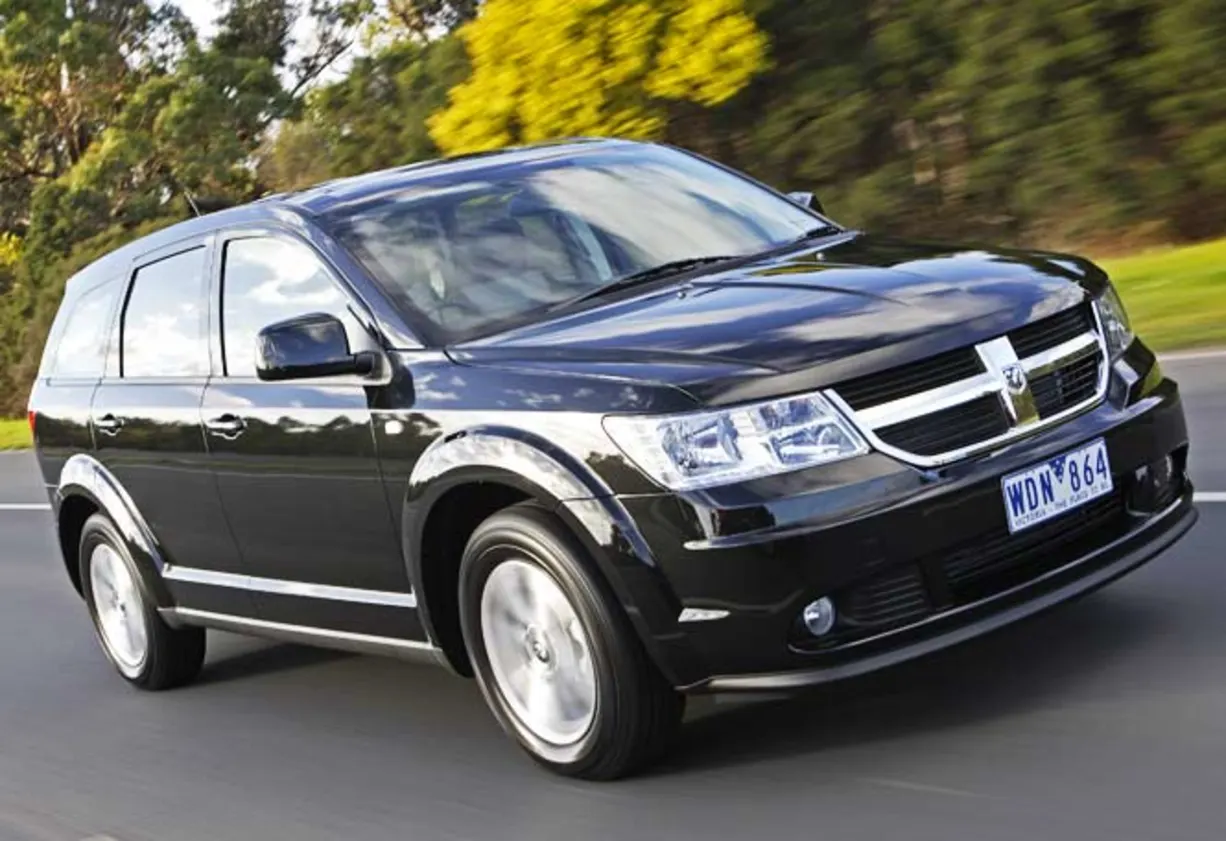
Fleet managers eventually learned that while the purchase price was low, the total cost of keeping Journeys operational was high. Many were pulled from service before hitting the 125,000-mile mark, a lifespan well below expectations for fleet vehicles.
Even Dodge seemed to lose interest in the Journey in its final years. Updates were minimal, and by the time production ended in 2020, most fleet buyers had long moved on to more reliable alternatives like the Toyota RAV4 or Ford Escape.
Next up: a luxury-branded sedan that sounded great on paper but fizzled fast in real-world fleet use—the Cadillac XTS.
2. Cadillac XTS (2013–2019)
At first glance, the Cadillac XTS seemed like the perfect premium choice for livery services, executive fleets, and upscale airport shuttles. With its sleek design, roomy interior, smooth ride, and Cadillac badging, it projected luxury without the steep price tag of European sedans.
For a while, it became a popular pick for black car fleets, funeral homes, and hotel transportation. But despite the promise, the XTS didn’t deliver the long-term value fleet buyers expected—and many were retired prematurely.
The XTS’s 3.6L V6 engine, especially in its high-output twin-turbocharged V-Sport variant, had decent performance on paper.
But in practice, both naturally aspirated and turbo versions were prone to mechanical headaches—cooling system failures, oil leaks, timing chain stretch, and even cylinder misfires well before 100,000 miles.
The complexity of the powertrain and tight engine bay made repairs costly and labor-intensive, a major red flag in any fleet environment.
Electrical issues were also frequent. The CUE infotainment system, in particular, was a constant source of complaints.
It lagged, froze, and even delaminated—where the touch screen would separate and become unresponsive—often requiring complete replacement. When a feature marketed as high-tech luxury becomes a warranty headache, fleet buyers lose patience fast.
While the XTS offered a spacious cabin and smooth ride, it fell short in efficiency. With an average real-world fuel economy of around 17–19 mpg in city use, it simply couldn’t compete with more efficient options like the Toyota Avalon or even hybridized SUVs that offered more room and better long-term reliability.
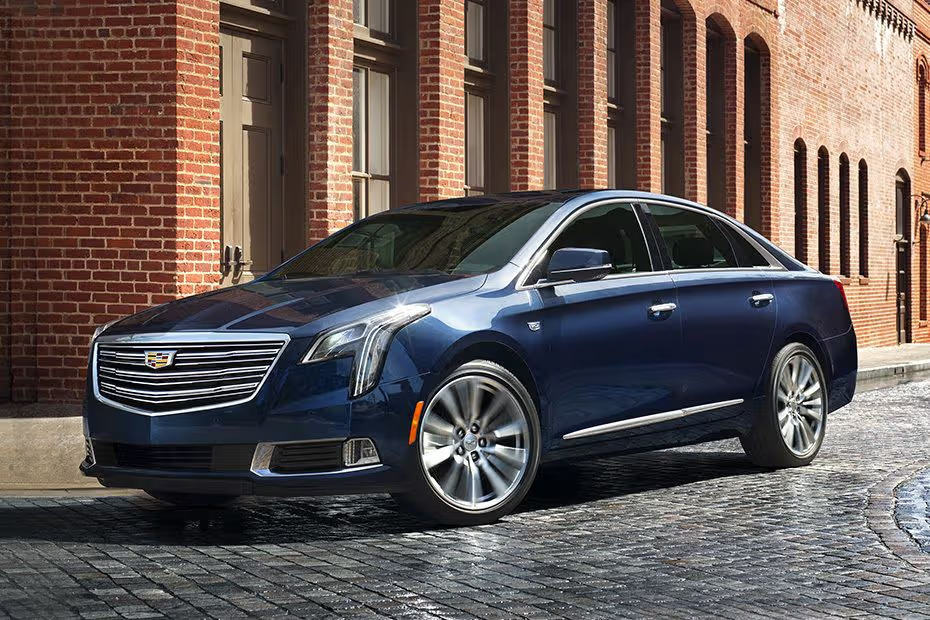
Many fleet operators expected Cadillac quality but got Buick-level durability at luxury-level repair costs. Combine that with declining residual values and higher-than-average insurance premiums, and the total cost of ownership quickly spiraled.
Within just a few years, companies began dumping their XTS fleets. Ride-hailing firms switched to Toyota Camrys or Chrysler 300s.
Executive car services moved to SUVs or hybrids that were more durable and offered better passenger space. And by the time Cadillac discontinued the XTS in 2019, its fleet market had all but dried up.
Up next: a compact crossover that failed to hold up under pressure—the Jeep Compass.
3. Jeep Compass (2007–2017, First Generation)
The first-generation Jeep Compass was Chrysler’s early attempt to break into the growing compact crossover market with a budget-friendly, fuel-efficient alternative to its traditional body-on-frame SUVs.
Marketed toward urban drivers and small families, it was also pushed aggressively into rental fleets, government contracts, and utility companies.
But the Compass quickly earned a reputation as one of the most underwhelming fleet performers of its time—and many didn’t last long in service.
At the heart of the Compass’s issues was its powertrain. The standard 2.0L and 2.4L “World Engine” inline-4s, combined with the widely criticized CVT (Continuously Variable Transmission), made for sluggish, noisy, and often unreliable performance.
Transmission failures became common after only 70,000–90,000 miles, with many fleet operators reporting early replacements. The CVT didn’t respond well to stop-and-go traffic or heavy loads, a major drawback for delivery use and city operations.
The build quality was also below par. The interior was filled with hard plastics, low-grade upholstery, and flimsy switchgear.
Early models lacked refinement, and seats wore down quickly under frequent use. Rattles, creaks, and water leaks were common complaints, especially in older units subjected to weather exposure or rough roads.
While some fleet buyers appreciated the Compass’s compact size and theoretical all-wheel drive capability, the reality didn’t meet expectations. Its off-road capability was limited compared to other Jeeps, and the AWD system was basic at best.
Reliability issues meant that even small municipalities and agencies with limited budgets started phasing them out faster than expected—some Compass units were retired with under 100,000 miles due to escalating repair costs.
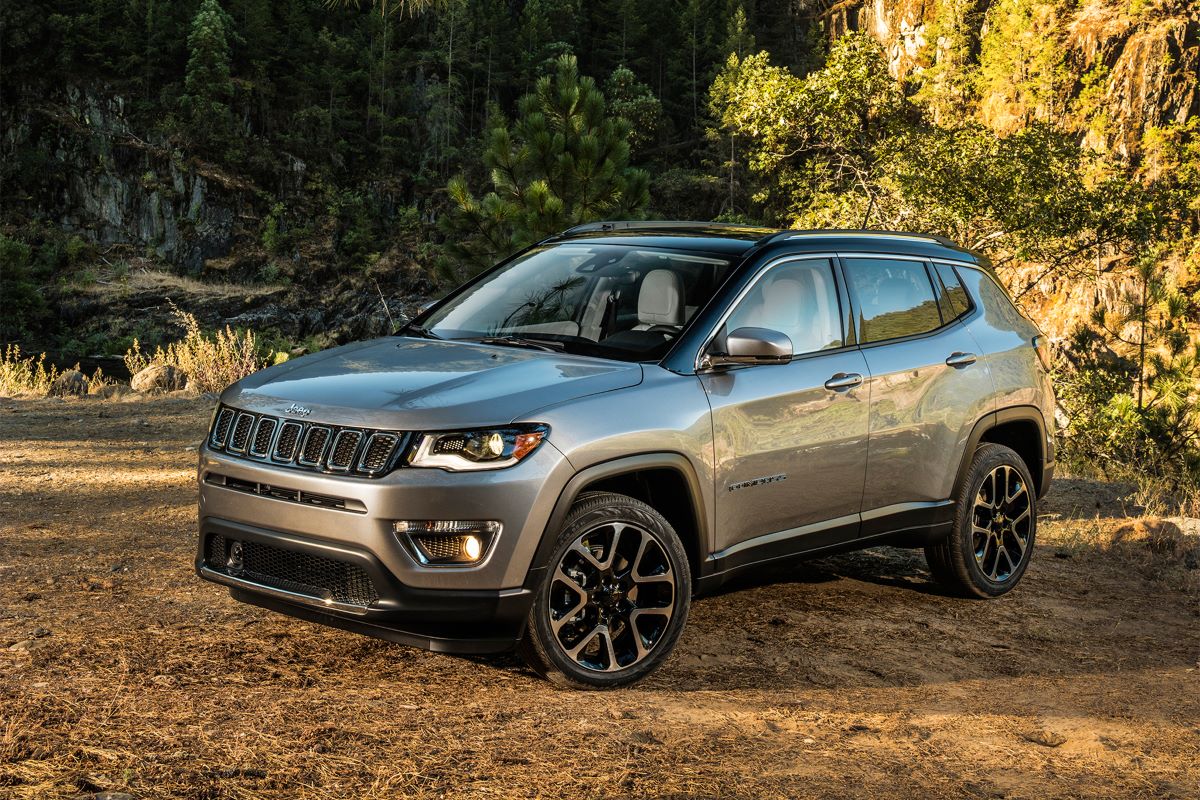
Fleet managers also struggled with inconsistent dealer support and hard-to-find parts in certain regions. Between warranty visits, limited aftermarket support, and disappointing resale values, the Compass failed to offer a sustainable ownership experience for most fleets.
By the time the second-generation Compass launched in 2017, FCA had addressed many of the quality issues—but for the first-gen model, the damage was done. For fleets, it was simply a vehicle that couldn’t handle the workload.
Coming up next: a luxury SUV that over-promised and under-delivered—the Land Rover Discovery Sport.
4. Land Rover Discovery Sport (2015–2020)
The Land Rover Discovery Sport was launched as a compact luxury SUV aimed at young professionals, upscale families, and yes—even premium fleet buyers.
It offered seven-passenger capability, stylish design, and the Land Rover badge at a relatively accessible price point.
Black car fleets, hotel shuttles, and private car services embraced it early on. But it didn’t take long for the Discovery Sport’s reputation to unravel—and many units were pulled from service well before their expected lifespan.
At the center of the Discovery Sport’s troubles was unreliable mechanical and electronic performance. Its 2.0L turbocharged four-cylinder engine, paired with a 9-speed ZF automatic transmission, proved inconsistent in fleet duty.
Owners and operators reported harsh shifting, transmission lag, and even complete gearbox failures—all before reaching 80,000 miles. Cooling system failures, turbocharger issues, and persistent oil leaks made maintenance a nightmare and repair costs skyrocket.
Compounding the issue was Land Rover’s spotty dealer support and expensive parts. For fleet operators relying on uptime, especially in transport services, the downtime and parts delays became unacceptable.
Many units were pulled from rotation not due to catastrophic failure, but because fixing multiple small issues became economically unjustifiable.
Inside, the Discovery Sport was undoubtedly stylish, but not particularly durable. Climate control systems often failed, infotainment glitches were common, and dashboard warning lights became routine nuisances.
Fit and finish, while premium in appearance, didn’t hold up under heavy use—especially in fleet settings where vehicles are often used around the clock.
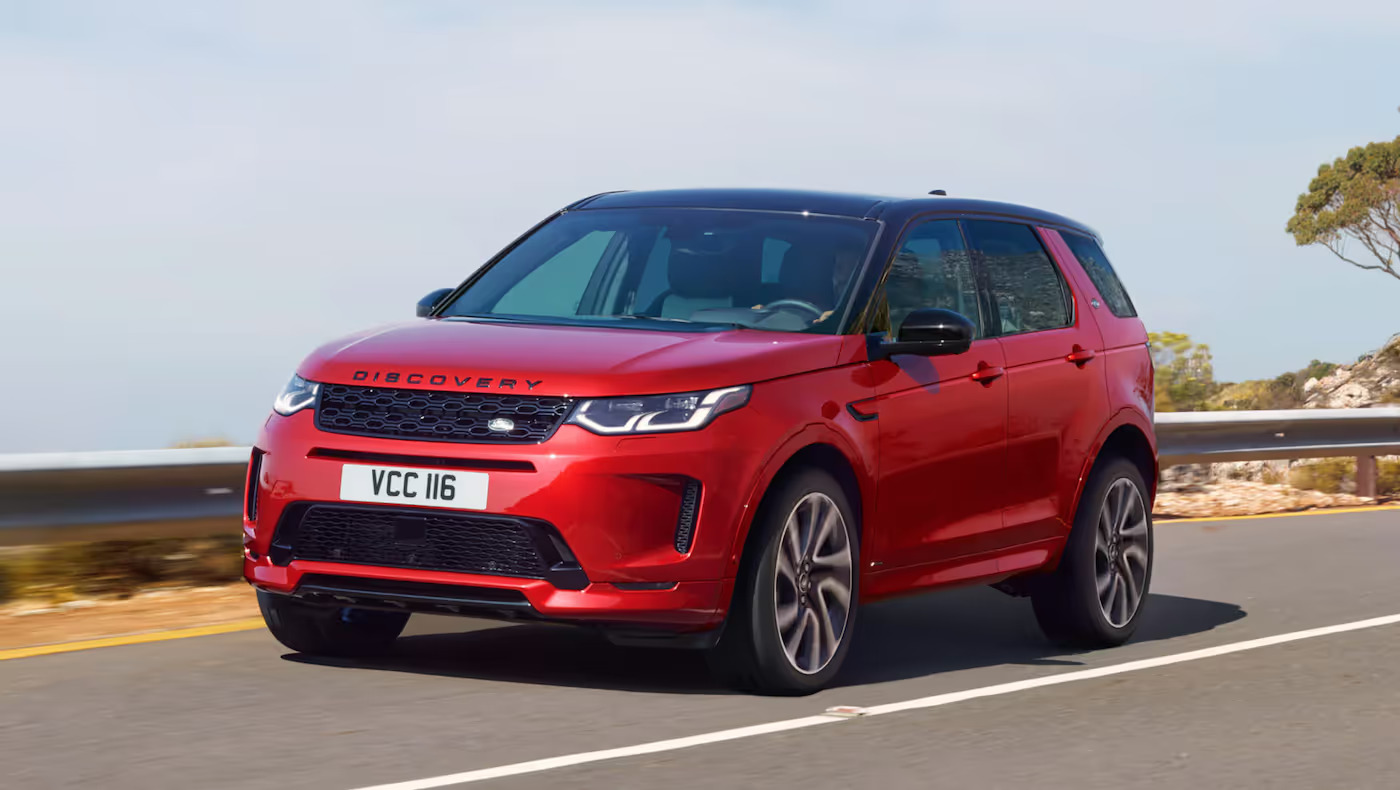
Fuel economy was mediocre for a compact SUV, and the all-wheel drive system, while competent, was rarely used to its potential in urban fleet roles. So operators weren’t getting true off-road capability, just extra complexity and weight.
By the end of its production run, many premium car services had already switched back to more reliable choices like the Lexus RX or Acura MDX.
Even used car buyers began steering clear of ex-fleet Discovery Sports due to their high cost of ownership and service unpredictability.
Next up is a car that was supposed to revolutionize city delivery—but ended up a logistical headache: the Ford C-Max.
5. Ford C-Max (2013–2018)
The Ford C-Max was introduced to the U.S. market with high hopes. Positioned as a hybrid-only alternative to the Toyota Prius, the C-Max was marketed as a smart, efficient people-mover and light-duty fleet vehicle.
With its hatchback utility, compact footprint, and Ford’s promise of class-leading fuel economy, the C-Max found its way into municipal fleets, rideshare services, and corporate motor pools.
But despite its innovative intent, it didn’t live up to the demands of fleet operations—and many were retired surprisingly early.
The biggest issue? Overpromised efficiency and underwhelming durability. Early advertisements claimed the C-Max Hybrid would achieve 47 mpg across the board.
In real-world usage, especially under heavy fleet cycles and urban stop-and-go driving, the number rarely reached 40 mpg—often hovering in the mid-30s.
This discrepancy was so significant that Ford was forced to revise its EPA estimates and compensate owners, undermining its credibility in fleet sales.
Mechanically, the C-Max wasn’t a total disaster—but it wasn’t robust enough for the high-mileage, minimal-maintenance nature of fleet use.
The 2.0L Atkinson-cycle engine and CVT hybrid system were efficient but not particularly resilient under sustained commercial pressure.
Battery degradation, HVAC system failures, and erratic brake regeneration were commonly reported by operators running them hard in city fleets. In taxi and shuttle duty, many units were decommissioned before 120,000 miles due to mounting repair costs.
Interior wear was also a problem. The seats, plastics, and door handles showed signs of fatigue too early, especially in vehicles with high turnover among drivers. While the C-Max offered clever storage and solid tech for its time, build quality wasn’t fleet-grade.
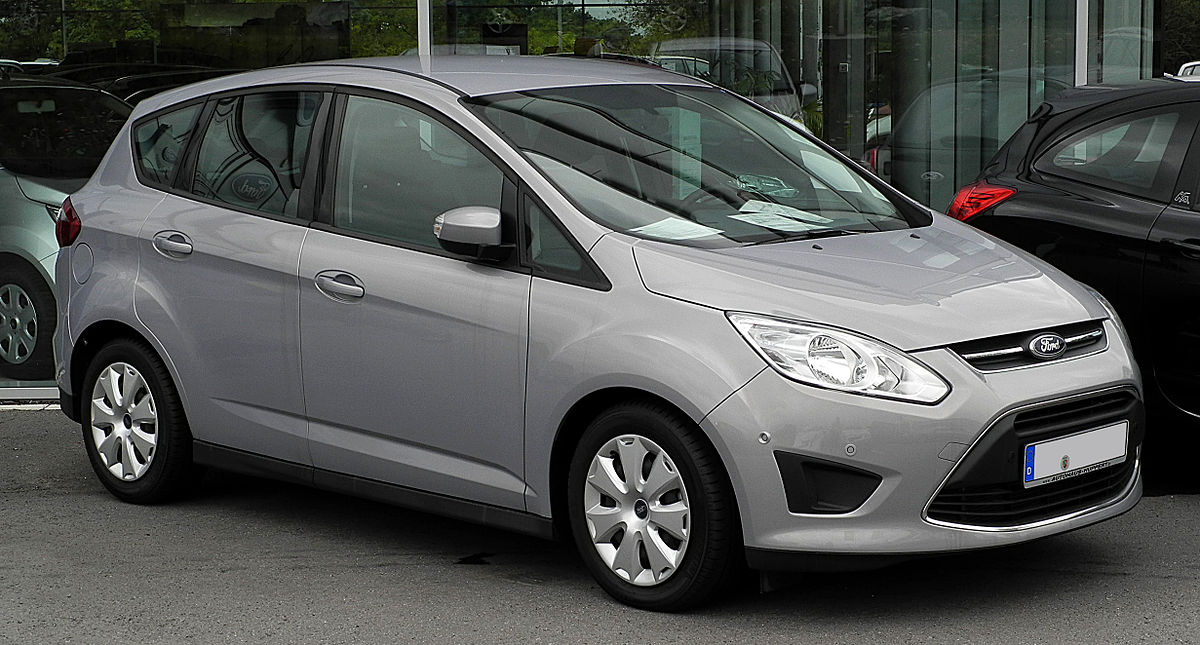
Electrical issues plagued some models, with problems ranging from unresponsive touchscreens to sensor faults that triggered dashboard warnings and failed inspections.
Perhaps the final nail in the coffin was Ford’s abrupt cancellation of the C-Max line in 2018. With no direct successor and limited parts supply, many fleet operators were left without long-term support.
As a result, resale values plummeted and fleet managers moved on to more proven platforms like the Prius or Hyundai Ioniq. The C-Max was a bold experiment—but for fleets, it proved to be a short-lived one.
Fleet vehicles live some of the harshest lives in the automotive world. They’re driven hard, maintained on tight budgets, and expected to stay reliable across long distances and years of constant use.
For a vehicle to thrive under these conditions, it takes more than just a good spec sheet—it takes true durability, ease of maintenance, and proven performance over time. The five vehicles we profiled as still running have all passed those tests.
They’ve become legends in their own right: from the bulletproof Ford Crown Victoria to the fuel-sipping Toyota Prius, each has earned its place in the pantheon of long-lasting fleet workhorses.
These vehicles succeeded not just because of robust engineering, but because they made economic sense. They minimized downtime, were cheap to repair, and retained their usefulness even after racking up hundreds of thousands of miles.
For fleet managers, those are the real measures of value—not flashy tech or luxury trims, but reliability where it counts.
On the other hand, the five vehicles that were retired early serve as important cautionary tales.
Whether it was the overpromising Ford C-Max, the chronically flawed Jeep Compass, or the luxurious but high-maintenance Cadillac XTS, these vehicles simply didn’t hold up to the wear-and-tear demands of real-world fleet duty.
High maintenance costs, early mechanical failures, and poor return on investment sealed their fate. In many cases, the same issues that plagued fleets also impact used buyers—so these vehicles should be approached with caution on the secondhand market as well.
Ultimately, the difference between a fleet success story and an early dropout isn’t always obvious at the time of purchase.
It’s what happens after 50,000 miles, and then again after 150,000, that separates the true performers from the liabilities. Fleet use reveals truths about vehicles that ordinary ownership never could.
Whether you’re buying for a business or just looking for a tough used car, understanding what thrives—or fails—in a fleet setting can save you thousands. The road has already tested these vehicles. All you have to do is learn from the results.
Also Read: 5 Used Cars That Are Great Investments and 5 That Are Just Trouble

